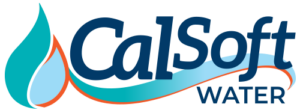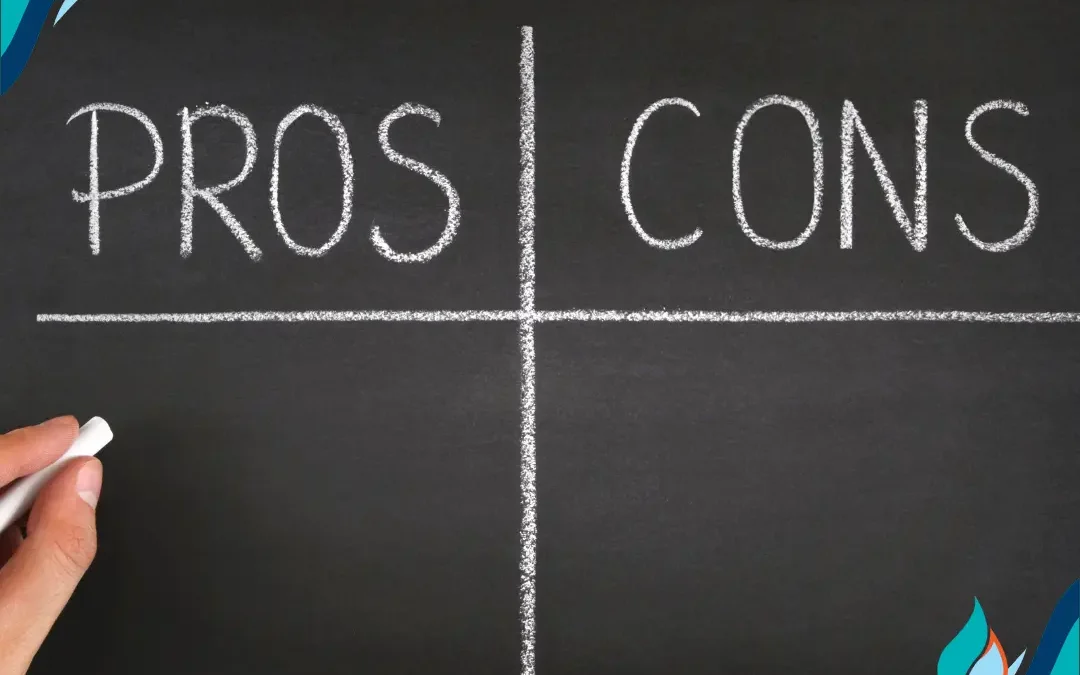Traditional salt-based water softeners have long been a viable solution to the problems homeowners face due to hard water. That’s because they effectively remove hard water minerals through a process known as ion exchange. The end result is softened water that’s easier on household fixtures and appliances as well as hair and skin.
While there’s no question that salt-based water softeners are effective, there are potential maintenance, environmental, and health concerns that could affect some homeowners. Here, we’ll review some of the disadvantages of salt-based soft water systems. Then, we’ll explain why portable exchange tank service, otherwise known as soft water delivery, could be a better solution.
4 Key Disadvantages of Salt-Based Water Softeners
1. Environmental Impact of Salt-Based Water Softeners
Salt Discharge: Salt-based water softeners discharge brine into the environment, which can contribute to salinity in water bodies. This is particularly problematic in areas where water resources are scarce and ecosystems are fragile.
Water Waste: These systems typically use a significant amount of water for the regeneration process, which can be wasteful, especially in regions facing water scarcity.
2. Maintenance and Operational Costs
Regular Maintenance: Salt-based water softeners require regular maintenance, including the frequent addition of salt and periodic servicing to ensure proper function.
Operational Costs: The cost of salt and the additional water used in the regeneration process can add up over time, making these systems expensive to operate.
3. Health Concerns
Sodium Content: The softening process adds sodium to the water. This can be a concern for individuals on low-sodium diets or those with certain health conditions.
Chemical Use: Some systems may also require the use of other chemicals for cleaning and maintenance, raising further health and environmental concerns.
4. Installation and Space Requirements
Complex Installation: Installing a salt-based water softener can be complex. This means that for many homeowners, DIY installation is out of the question. Instead, a professional, such as a water treatment technician, must be hired for the job.
Space Consumption: These systems can take up considerable space in a home, which may not be ideal for those with limited room.
Salt-Based Water Softeners vs. Portable Exchange Tank Service: What’s the Difference?
Traditional salt-based water softeners require electricity and a drain, are connected to your household’s plumbing system, and are usually installed by a professional. Another soft water option is portable exchange tank service, also known as soft water delivery. Portable tanks of soft water are delivered to your home according to a predetermined schedule. There is no electricity or drain required for operation.
Now, let’s talk about how portable exchange tank service can address some of the concerns presented by salt-based water softeners.
1. Environmental Benefits
No Salt Discharge: Portable exchange tank service eliminates the need for salt and the tanks don’t require a drain. This avoids the environmental issues associated with brine discharge.
Water Conservation: These systems do not require the water-intensive regeneration process that salt-based water softeners do, making them a more sustainable choice.
2. Convenience and Cost Efficiency
Low Maintenance: With portable exchange tank service, our water treatment technicians cover all aspects of maintenance. This includes replacing the tanks and ensuring the system is functioning correctly.
Predictable Costs: Soft water delivery operates on a subscription basis. This provides predictable costs without the need for purchasing salt or incurring high water bills due to regeneration cycles.
3. Health and Safety
Sodium-Free Water: Since there is no salt involved in the softening process, the resulting water is sodium-free. This could make it healthier for consumption for people with specific dietary needs.
Chemical-Free: These systems typically do not require the use of harsh chemicals, reducing potential health risks.
4. Flexibility and Space Efficiency
Easy Installation: Portable exchange tanks are installed by your service provider and do not require significant changes to your home’s plumbing system. This makes soft water delivery an excellent choice for renters or people who anticipate moving soon.
Space Saving: The tanks are generally compact, taking up less space than traditional salt-based water softeners.
Salt-Based Water Softeners vs. Soft Water Delivery: Which Option Is Best?
Ultimately, the answer to this question depends on several factors. Each homeowner must evaluate their needs and preferences in terms of installation, maintenance, space, health, and environmental concerns. The best soft water solution is one that meets YOUR specific household needs, water usage considerations, and budget.
At CalSoft Water, we offer a variety of soft water solutions, including salt-based water softeners and portable exchange tanks. Our soft water delivery services customers throughout the Santa Maria area, including San Luis Obispo, Paso Robles, Avila Beach, Nipomo, and surrounding cities.
Regardless of which option you choose, there’s NO reason to continue living with hard water problems. Contact us today to learn more about our affordable and environmentally-friendly soft water options!

